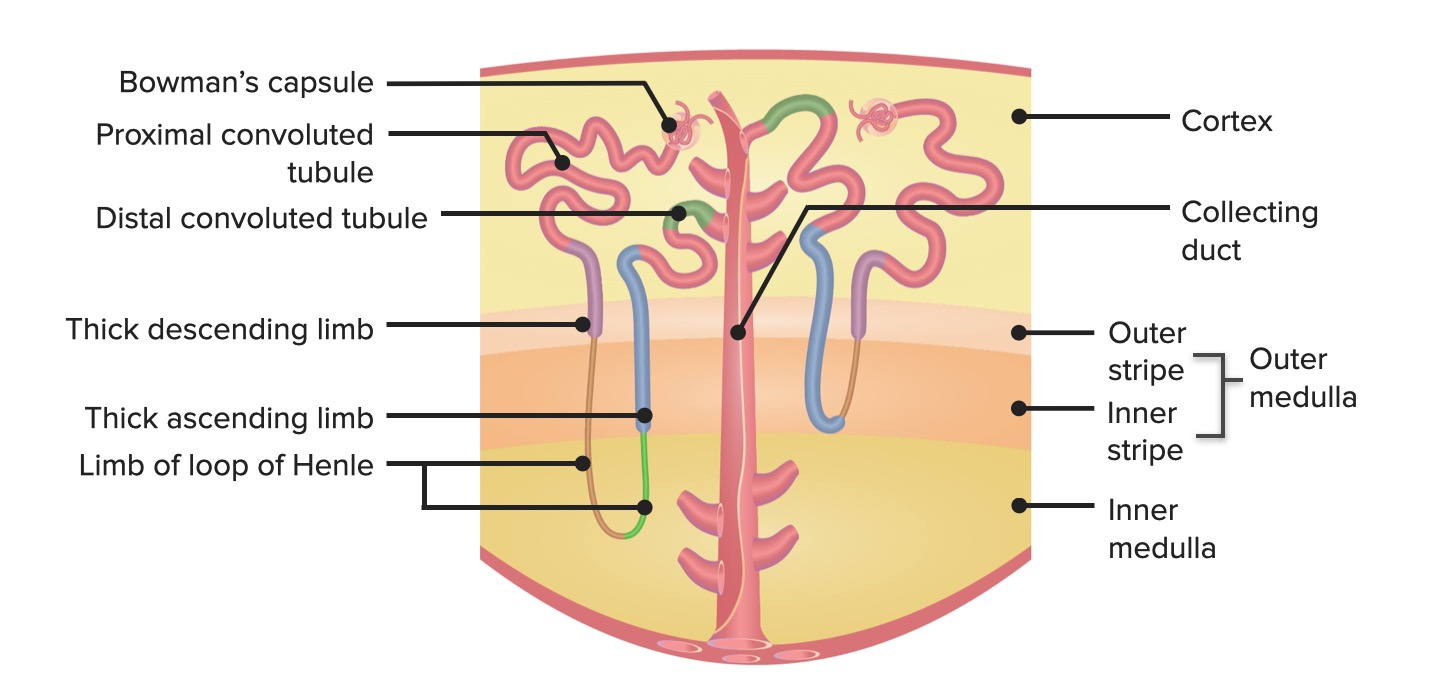Playlist
Show Playlist
Hide Playlist
GI Losses – Hypokalemia
-
Slides Potassium Disorders Hypo and Hyperkalemia.pdf
-
Reference List Nephrology.pdf
-
Download Lecture Overview
00:01 So GI losses are going to include things like vomiting or placing an NG tube and having these or gastric tube output in the setting of a hospital. 00:09 That's going to be associated with metabolic alkalosis, because of hydrochloric acid loss. 00:16 Now the potassium from the emesis itself is actually quite low. 00:19 It's around 5-10 Milliequivalents per liter. 00:22 It's not until you have sustained vomiting or nasogastric tube output that you actually get profound hypokalemia. 00:30 And that is because of concurrent urinary losses because we're activating aldosterone. 00:36 We're losing volume. 00:37 And when we lose volume remember wrasse is going to be stimulated including aldosterone. 00:44 And remember what aldosterone does it's going to open those sodium channels. 00:48 It's going to open those potassium channels and it's going to stimulate that sodium potassium ATPase all favoring the e-flux of potassium into that tubular fluid. 00:58 Now in addition to aldosterone. 01:01 We also have an increase in plasma bicarbonate. 01:03 Remember we're losing hydrochloric acid. 01:05 So as we increase our plasma bicarb, we actually increase pass are reabsorbed of threshold, and that causes bicarb to be filtered in the tubular fluid. 01:16 Now it's an anionic can't just go in the tubular fluid by itself. 01:19 So it's going to pair with sodium and when it does so, guess what happens we have an increase in distal delivery of sodium to that principle cell and we talked about how a increase in distal delivery of sodium favors potassium e-flux. 01:33 So we really can get profoundly hypokalemic when a patient has ongoing vomiting a nasogastric tube output. 01:39 Now other GI losses to think about are diarrhea, or laxative use. 01:44 When we have stool losses, this can be associated with a metabolic acidosis. 01:49 Why is that? Because the colon has bicarb rich secretions and we're losing bicarbonate through those two losses. 01:56 Now the potassium lost from here is actually quite a bit higher. 01:59 It's around 20 to 50 Milliequivalents per liter.
About the Lecture
The lecture GI Losses – Hypokalemia by Amy Sussman, MD is from the course Potassium Disorders: Hypo- and Hyperkalemia.
Included Quiz Questions
Which of the following statements regarding acid-base and electrolyte disturbances is true?
- Hypokalemia from GI losses is exacerbated by renal losses.
- Vomiting will cause metabolic acidosis.
- The most common acid-base disorder in patients with diarrhea is metabolic alkalosis.
- The rate of potassium loss rate is higher with vomiting than with diarrhea.
- Increased aldosterone levels cause hyperkalemia.
Customer reviews
5,0 of 5 stars
| 5 Stars |
|
5 |
| 4 Stars |
|
0 |
| 3 Stars |
|
0 |
| 2 Stars |
|
0 |
| 1 Star |
|
0 |





